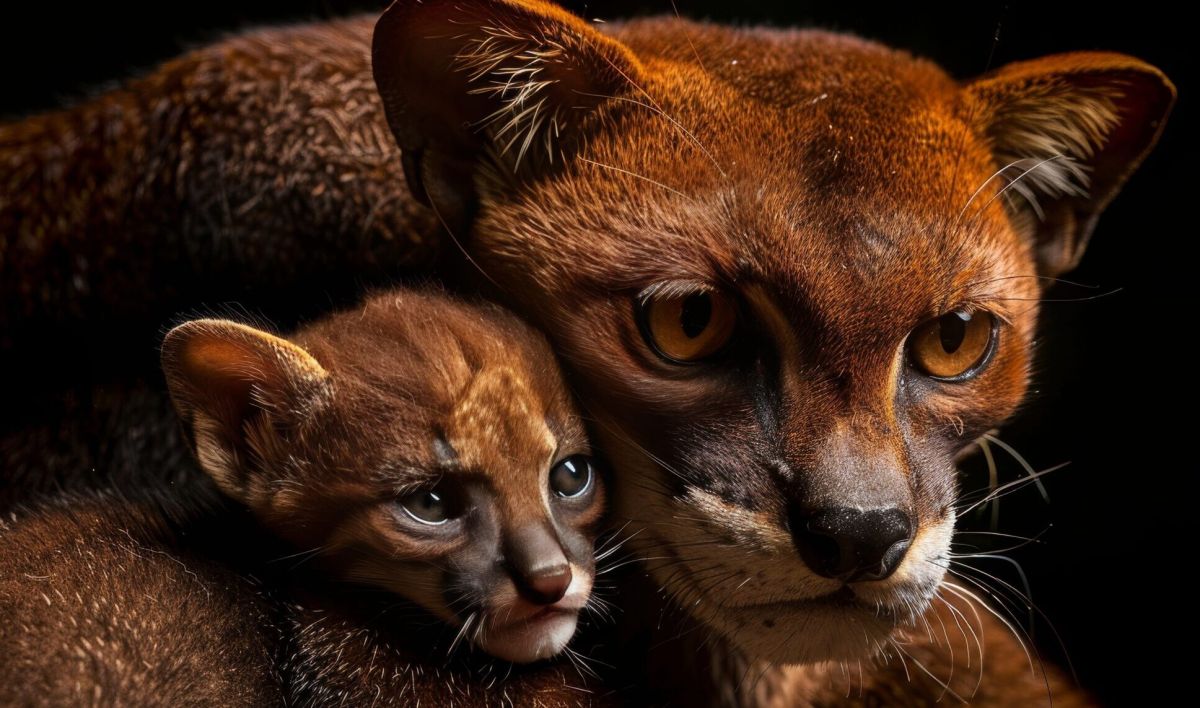The Bay Cat

The Bay Cat (Catopuma badia), a small cat species native to the rainforests of Borneo, is one of the world’s most unique and lesser-known felids. With its striking appearance and elusive behavior, the Bay Cat has captured the interest of wildlife enthusiasts and researchers alike.
Physical Characteristics
The Bay Cat is distinguished by its distinct reddish-brown coat, which provides excellent camouflage among the forest foliage. It has a long, slender body, measuring about 60 to 110 centimeters in length, with a tail almost as long as its body, aiding in balance when navigating through trees. Adult Bay Cats typically weigh between 2.5 to 4.5 kilograms, making them one of the smaller species of wild cats. Their large, yellow eyes are perfectly adapted for low light conditions, a crucial advantage for a creature that prowls through the dense understory of the rainforest.
Unlike some of its larger relatives, the Bay Cat does not have a notable rosette pattern on its coat. Instead, it features faint spots and stripes, which help it blend seamlessly into its surroundings. The Bay Cat also has strong, retractable claws ideal for climbing and capturing prey.
Habitat and Distribution
Endemic to the island of Borneo, the Bay Cat primarily inhabits the lowland rainforests, montane forests, and occasionally secondary forests. These habitats provide the dense cover necessary for hunting and protection from larger predators. The Bay Cat has a relatively restricted range, and its distribution is largely confined to the Malaysian states of Sabah and Sarawak, as well as the Indonesian regions of Kalimantan.
Behavior and Diet
Being a solitary and mostly nocturnal hunter, the Bay Cat’s behaviors are not as well-documented as those of more common feline species. However, researchers believe that they are arboreal, spending much of their time in trees where they hunt various small mammals, birds, and reptiles. The Bay Cat’s diet mainly consists of rodents and other small prey, which it skillfully stalks and ambushes.
Conservation Status
The Bay Cat is currently listed as endangered on the IUCN Red List. The primary threats to its survival include habitat loss due to deforestation, illegal logging, and land conversion for agriculture. The remarkable biodiversity of Borneo is being compromised, and as its native forests continue to be fragmented, the Bay Cat’s population is increasingly at risk.
Efforts are being made to study and protect this elusive feline, with initiatives focused on wildlife conservation and habitat preservation. Establishing protected areas and promoting sustainable land-use practices are crucial steps needed to ensure the survival of the Bay Cat and its environment. Additionally, increasing awareness about the importance of biodiversity and the specific needs of the Bay Cat among local communities can play a vital role in its conservation.
Conclusion
The Bay Cat, while not as well-known as other felid species, embodies the rich biodiversity of Borneo’s rainforests. As one of the rarest cats in the world, its survival is intertwined with the health of its habitat. Protecting this unique species requires ongoing efforts to mitigate the threats it faces and preserve the beauty of the Bornean ecosystem. For those interested in wildlife, understanding and supporting conservation efforts for the Bay Cat can contribute to a more sustainable future for both this elusive feline and the rich biodiversity it represents.



